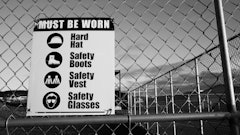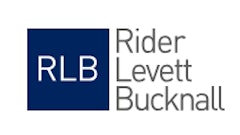
A strong organizational structure is important for any business from the very beginning. While you may be starting out on your own or with very few team members, you should build out your organizational structure in a way that will scale with your business as you grow.
Functional Areas
Start by determining the functional areas (departments) you’ll have in your business. For most companies this will include:
o Operations: The fulfillment of services you provide and/or the production of the goods that you sell.
o Scheduling
o Project Management
o Procurement
o Service Teams
o Administration – The administrative arm of your business.
o Accounting
o Administrative
o Facilities
o HR
o IT
o Payroll
o Sales & Marketing – The driving of new business growth.
o Customer Service
o Marketing
o Sales
Every company is different, and you may choose to add additional functional areas or name your functional areas differently. Some companies may put customer service under operations, while another may think it fits best within Sales & Marketing. You should think through the following criteria when setting your functional areas:
1) What needs to get done for your company to succeed?
2) Which functions within the business fit best together as one unit?
3) How will your company work most effectively?
4) Who is the right leader (not a specific person, but functional area leader) to oversee a particular task or responsibility?
5) If you were to have a departmental meeting for each functional area, which people in the same room will make the most efficient use of that meeting time?
If you’re trying to determine which functional areas make the most sense in your company, you’re going to think about the different tasks/responsibilities/outcomes that you need to see in your business to operate effectively. For example, you’ll know that you need to sign new jobs to create revenue. You determine that you don’t want the person in charge of sales to get bogged down with managing the production of the project. So, you decide Sales is a function you need separate from Operations.
Where you put each function/responsibility is up to you, just think through the most efficient way to get from A to Z. Remember, it’s important not to think about actual people (names) yet. Instead, think about the most efficient line of communication, operational workflow, and skillsets needed.
Organizational Chart
Once you have determined your functional areas, you’ll then need to come up with your organizational chart. This will outline each position you believe you will need in your company. Again, do not think about the people you have, can afford, or how big you are right now, but think about the responsibilities that you need to be assigned for business to get done. For a while, each person will likely be filling multiple roles. Think about the ideal company structure. For example, you may decide that a Production Manager is needed to oversee the scheduling of all jobs and ordering of product, but you need a Project Manager to manage and run specific projects. Those may be two separate roles, even if you can only have one person managing both right now.
It's important to think about the best separation of work when your company is at a larger scale, so you can think through what really makes sense. Just because your office manager currently does your accounting, doesn’t mean that’s the right person to handle accounting in your ideal structure.
Every role within your company should have different responsibilities. No position should have the same responsibilities as someone else. For example, if your VP of Sales & Marketing is responsible for setting marketing strategy, then your marketing director cannot also be responsible for setting marketing strategy. However, your marketing director could be responsible for carrying out the marketing plan. One sets the strategy, and another carries out the plan – these are different responsibilities. If you make two different people responsible for the same task or outcome, then ultimately no one is responsible.
Now, you may wonder how this works if you have 5 different sales managers? You may think they are all accountable to the same outcomes or responsibilities. However, there is likely a specific distinction you have given each sales manager, whether it be a specific region, a certain type of account, or specifically assigned accounts. So, even though it seems like they have the same responsibilities, they are unique in that they have those same responsibilities, but for different customers, areas, products, etc.
The most important thing to remember when developing your organizational chart is that no two roles can have the same responsibilities. However, you CAN have the same person covering multiple roles. This will happen during the early stages of a business. You will create your ideal organizational chart and have 25 different positions, but you will only currently have 5 people on staff. This will mean that some people are wearing multiple hats. Make sure that there is a name in each box, and that someone is responsible for all tasks/outcomes in each role. When you’re first starting out, this may mean that you, the owner, are wearing 25 hats!
Getting your organizational structure set up for your business is an important first step for being ready when your business starts to scale. It is much easier to update and rework your structure as you go if you already have a good foundation in place. If you don’t, you’ll end up running your business like a mouse on a wheel and never feel like you’re getting anywhere.




















